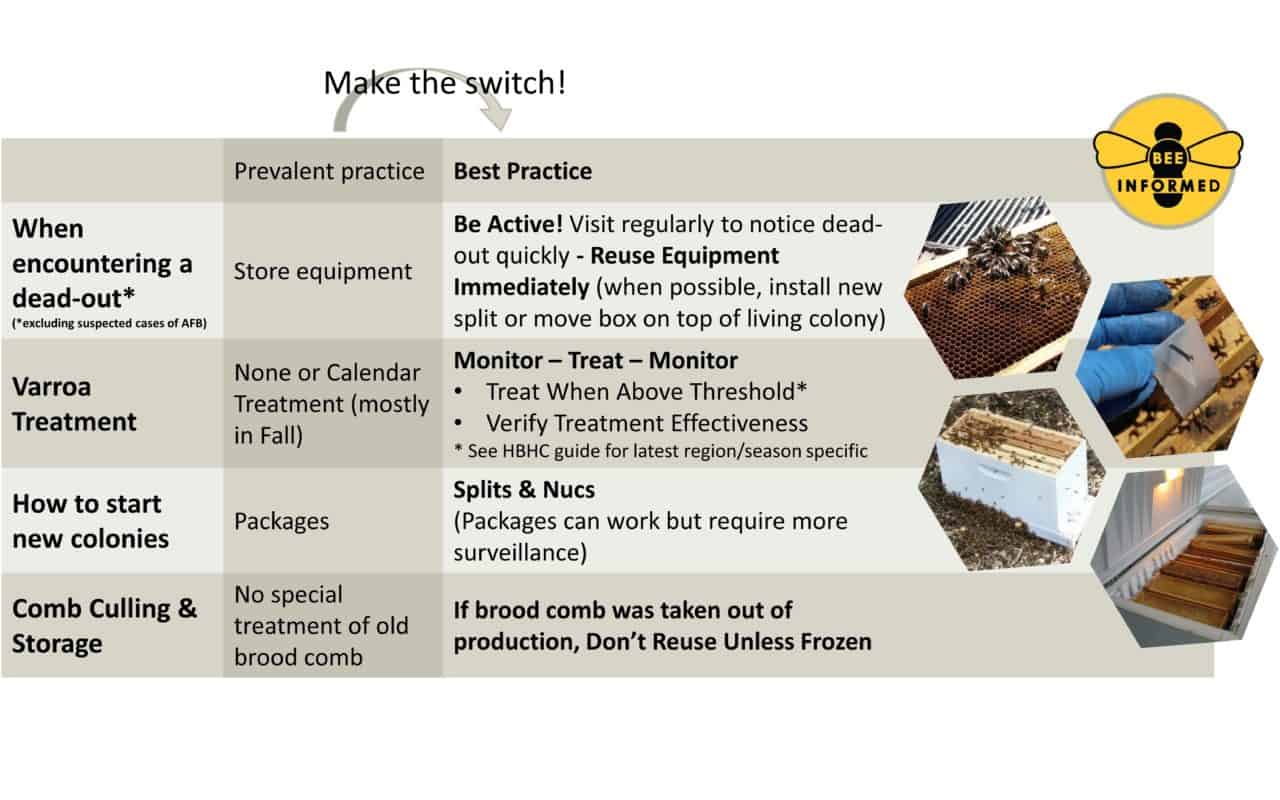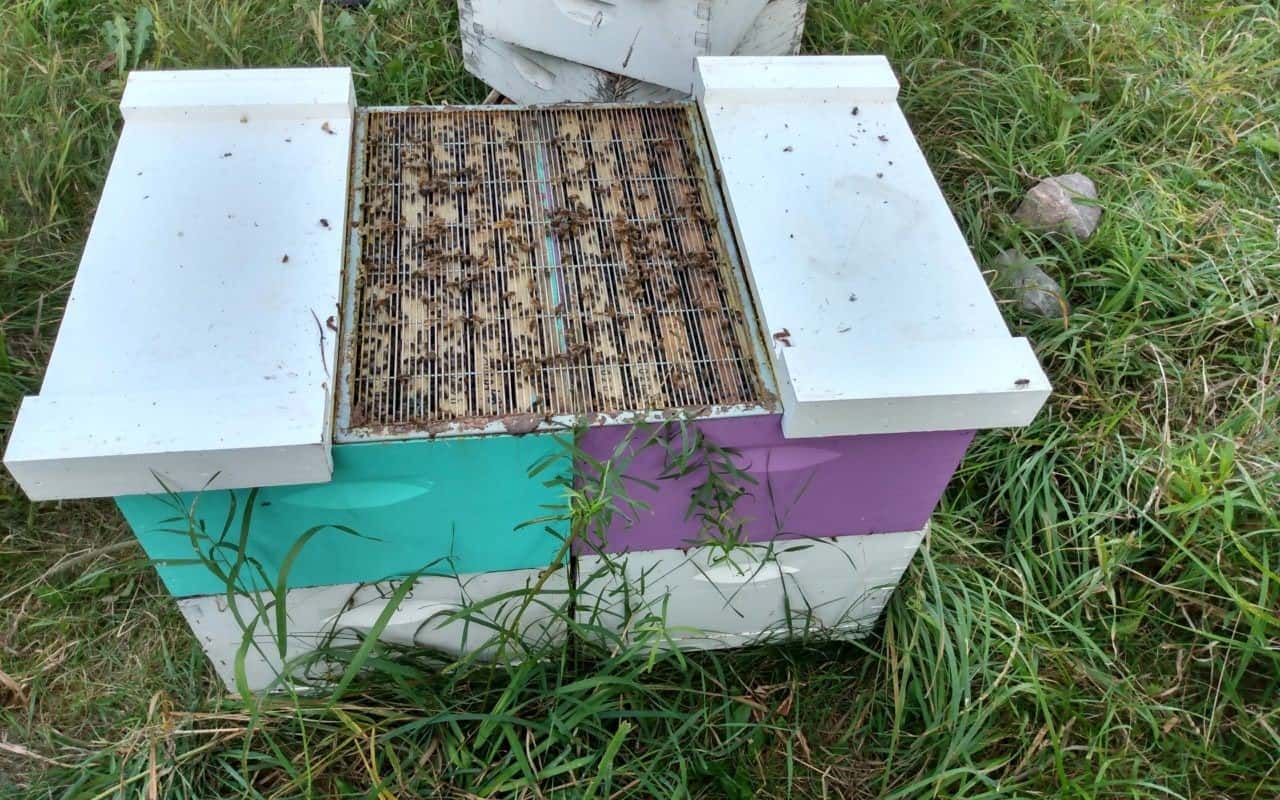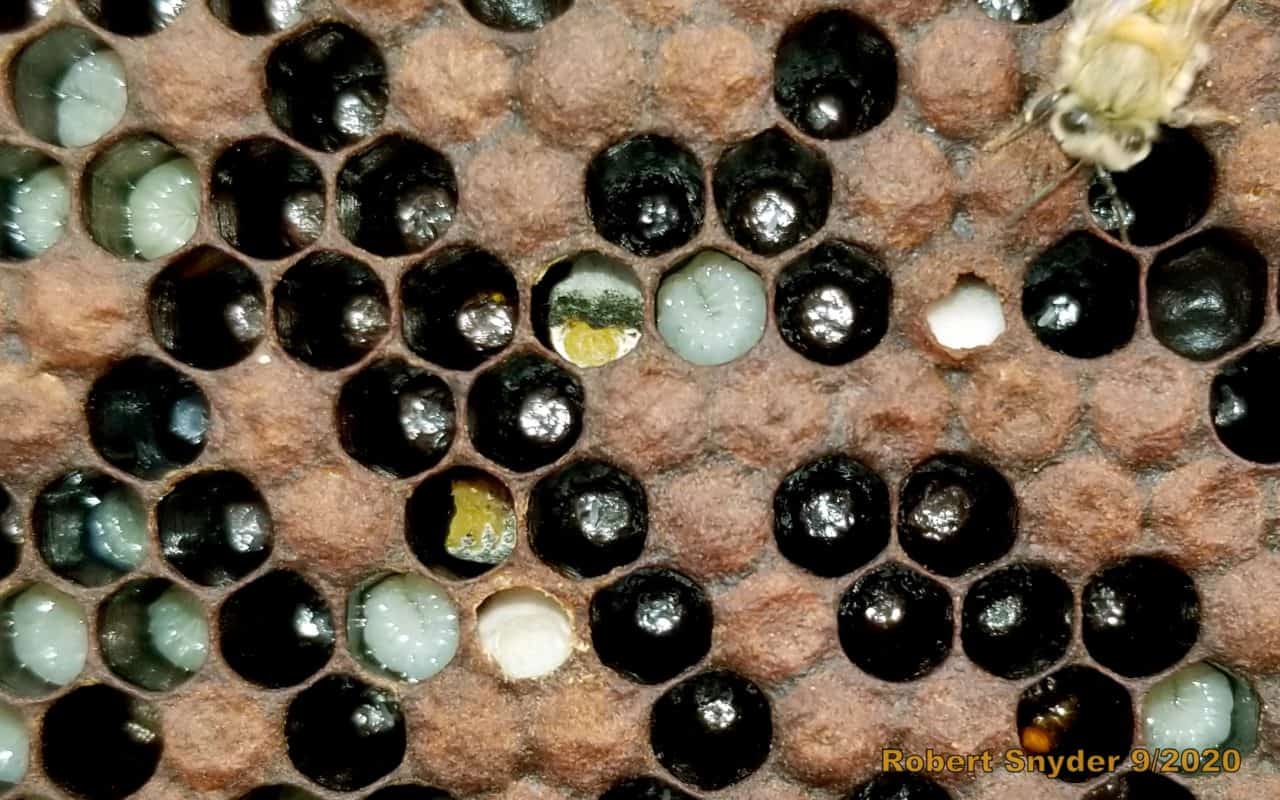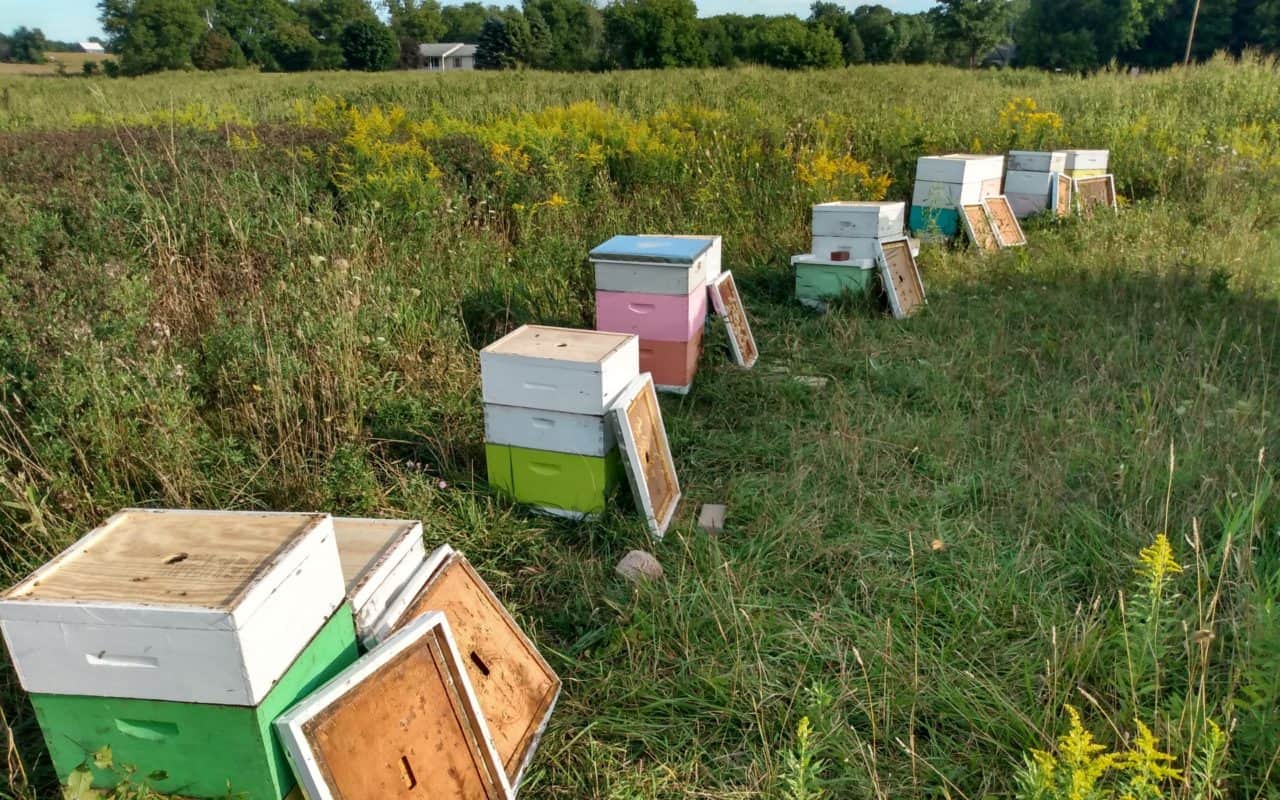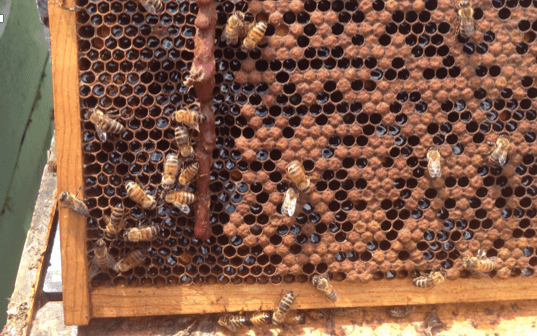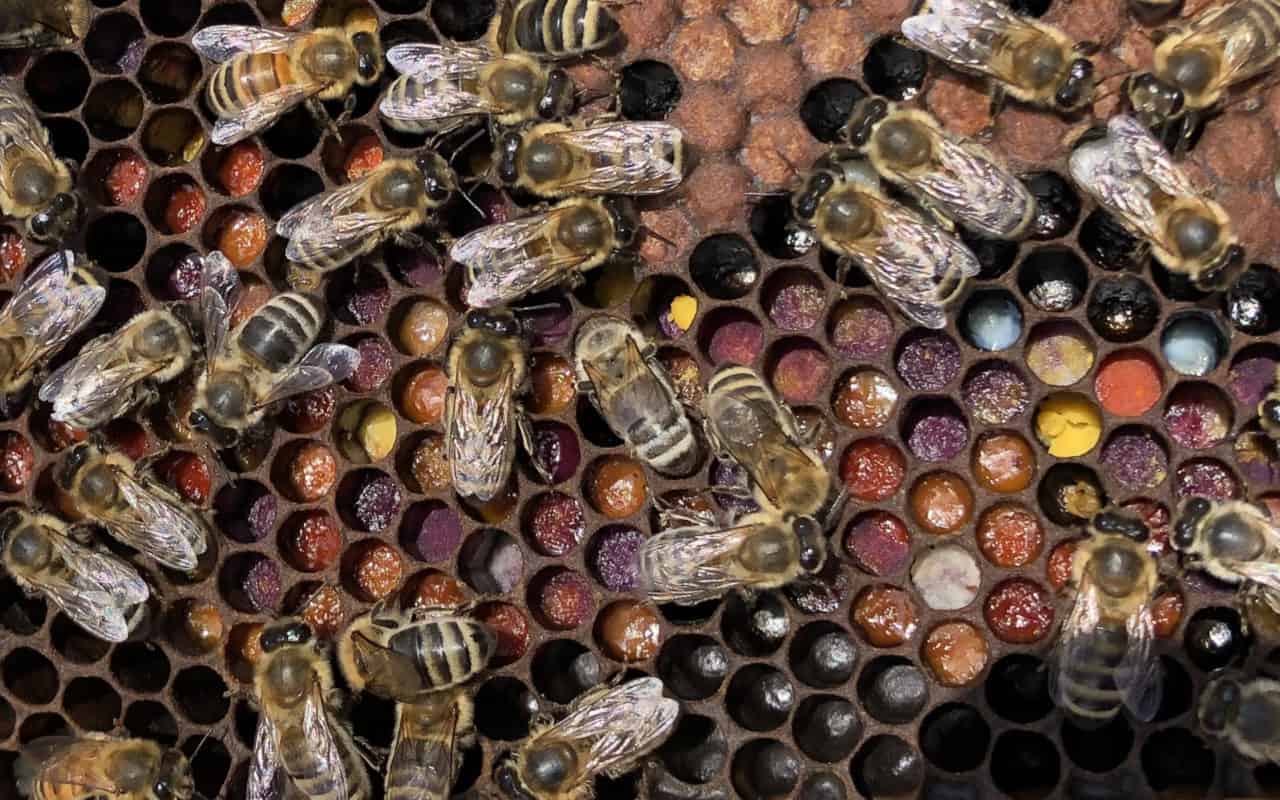Every spring, The Bee Informed Partnership (BIP) administers the Annual Colony Loss and Management Survey to beekeepers across the country. The survey was begun in 2006 to keep close track of US honey bee colony mortality rates after many of the country’s beekeepers began reporting alarmingly high overwinter colony losses. The survey was amended a few years later to include questions about beekeeper management practices, in order to record trends in management strategies and evaluate the link between those practices and risk of colony mortality. As part of her Ph.D. thesis at University of Maryland’s Bee Research Lab, BIP’s Science Coordinator, Dr. Nathalie Steinhauer, in…
One Colony or Two? How Hives Can Share
One of the first things beekeepers learn, often even before getting bees, is that a colony has many bees but just a single queen. While this is surely true in the vast majority of colonies, I have seen two queens coexisting enough times—and even once found three in a single brood box—to know that the things we beekeepers know as rules may only be viewed as guidelines by the bees themselves. Another thing you learn very early in beekeeping is that a single stack of boxes represents a single colony. The colony is the unit, living in a hive of its own, discrete from the…
The Bee Health Collective, A Fantastic New Bee Health Tool
Image: https://beehealthcollective.org/
Are you a beekeeper looking to find or post a job? Are you a student looking for bee-related scholarships? Are you an educator or concerned citizen looking for accurate, up-to-date U.S. honey bee colony health statistics? If you answered yes to any or all of the above, then you should visit the Bee Health Collective’s website https://beehealthcollective.org and have a look around! The Bee Health Collective has designed a “one-stop shop” for all of your U.S. honey bee information needs, presented in a well-organized, easily navigated set of menus. In About Honey Bees you can find recent, accurate, peer-reviewed information on a range of honey…
Chalkbrood Disease Primer
When I started inspecting colonies for honey bee diseases in Pennsylvania in 2008, the first and most prevalent disease I found was chalkbrood. I observed this disease a few weeks into the spring season while inspecting a few colonies. I had seen the disease on several other occasions, so it was very easy to identify by the hard “chalk-like” mummies inside the cells. Ascosphaera apis is the fungus responsible for this bee disease. The exact origin of chalkbrood is unknown, but it most likely arrived from Europe with the alfalfa leafcutter bee (Megachile rotundata), when the bee species was introduced to assist with pollination demands…
Sentinel Apiary Program October Update
Hello beekeepers, it is hard to believe it is almost the end of the 2020 Sentinel season already! We had a little sabbatical from our Sentinel blogging this year because so much has been going on, but we are back! There are many exciting things on their way for the Sentinel Apiaries program, and I cannot wait to start sharing them with you over the next few months. In the meantime, here is a little sneak peek of what's to come. Before I delve into tidbits from this year, I want to let you know about the Sentinel app that our fantastic IT team is…
The Challenges Of Setting Up A Small Case Study Experiment: Part I
This year, I vowed I would conduct one or two small case study trials to investigate some hunches I have had for a while. I am mostly curious about Oxalic Acid Sublimation (OAV) as a treatment against Varroa mites. Primarily I would like to investigate the recommended dosage. But before I can set this up as a valid experimental design, I need to set up some colonies to perform an experiment on. At the Bee Informed Partnership, we look at thousands of colonies each year, but we usually do not maintain our own. This year, I set up a small apiary and ran into some…
Bee Blown Away
Late summer is the time of year I start hearing about good honey crops. What most non-beekeepers do not realize is how much work goes into harvesting that honey. The first big step is to remove the bees from the honey supers. Beekeepers have several good choices for doing this task. Shaking/Brushing For hobbyists with a just few honey supers it may be easiest to shake and brush the bees off each frame back into the hive. Bring an empty super with a bee tight lid to put the brushed off frames in as you go along. You probably have a bee brush and an…
The Great (Bee) Escape
Honey harvest is a point in the year that many beekeepers look forward to, as it is a chance to enjoy some of the tangible rewards of their (and their bees) hard work throughout the season. There are several methods of harvesting honey, but the common thread is they all involve separating the bees from the combs and supers containing the surplus honey to be taken. The most prevalent methods for large-scale operations are fume boards or leaf blowers, which allow many supers to be cleared of bees quickly. At a smaller scale, many beekeepers will remove bees from individual frames by shaking or brushing…
Hot off the press: BIP’s State Specific Colony Losses!
This blog comes to you from the Southern part of the U.S. - Alabama specifically - where beekeepers are currently sweating away as they diligently check their colonies for food and mites! They’re preparing for winter already! As you know, these past months has been unusual in many ways. For example, lots of beekeepers report difficulties finding sugar right now. Another example comes from the 2019/20 BIP Colony Loss Survey results. If you’ve read this year’s abstract or watched the news, you already know that we recently reported that beekeepers experienced the highest honey bee colony summer losses on record last year (2019). It was…
Idaho Honey Bees, Foraging Beyond Potatoes
What is the first thing that comes to mind when you think of Idaho? Did you think of potatoes? I would have, until I accompanied Ben Sallmann, BIP Pacific Northwest Tech Transfer Team Field Specialist, on a sampling trip to Idaho and Montana. I was struck by what this state has to offer honey bees and their beekeepers. It is no wonder they call it the ‘gem state’. According to the Idaho State Department of Agriculture, 20% of the state’s gross product comes from the agricultural sector, the single largest contributor to its economy. This production, of course, includes that of their famous potatoes, which…
